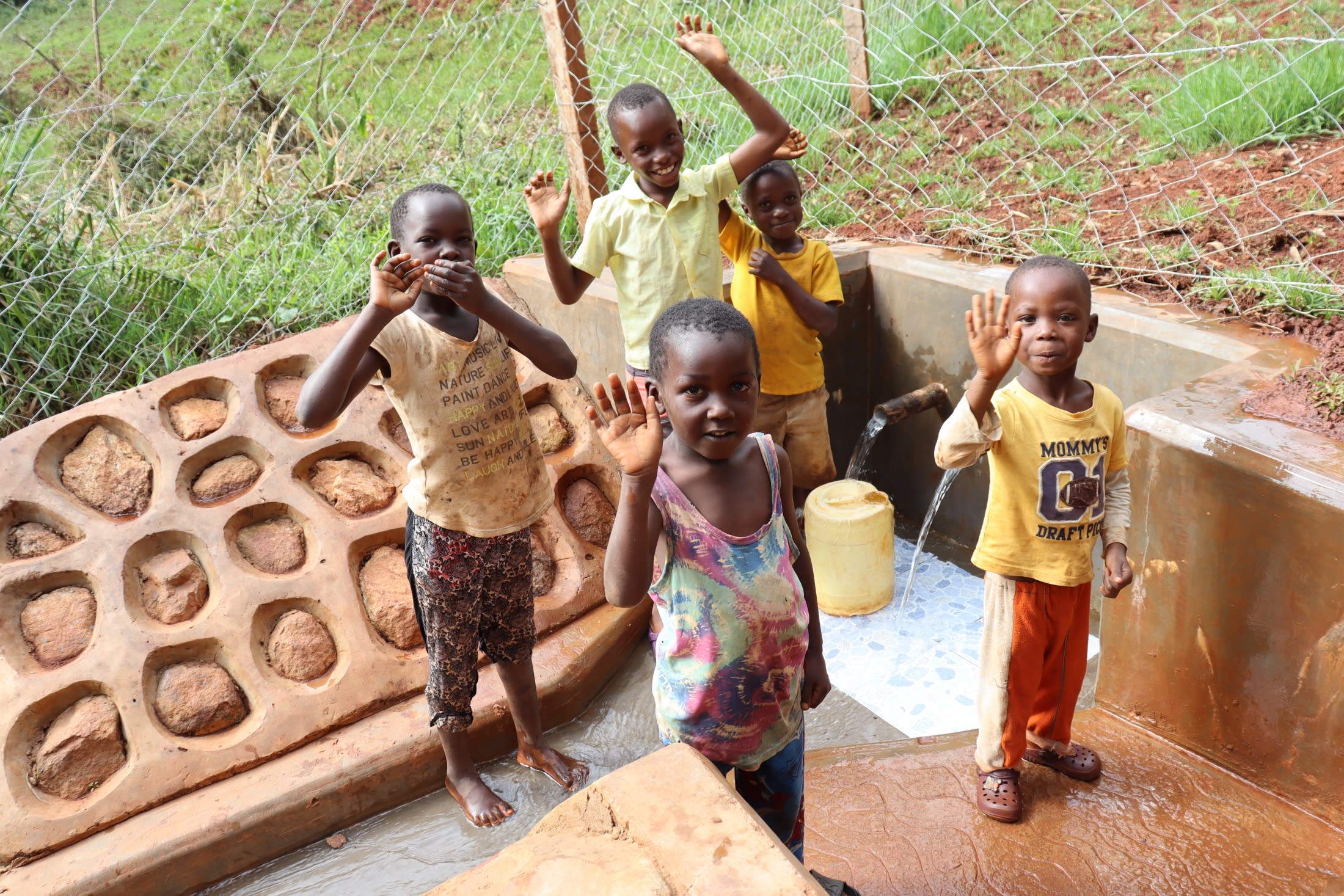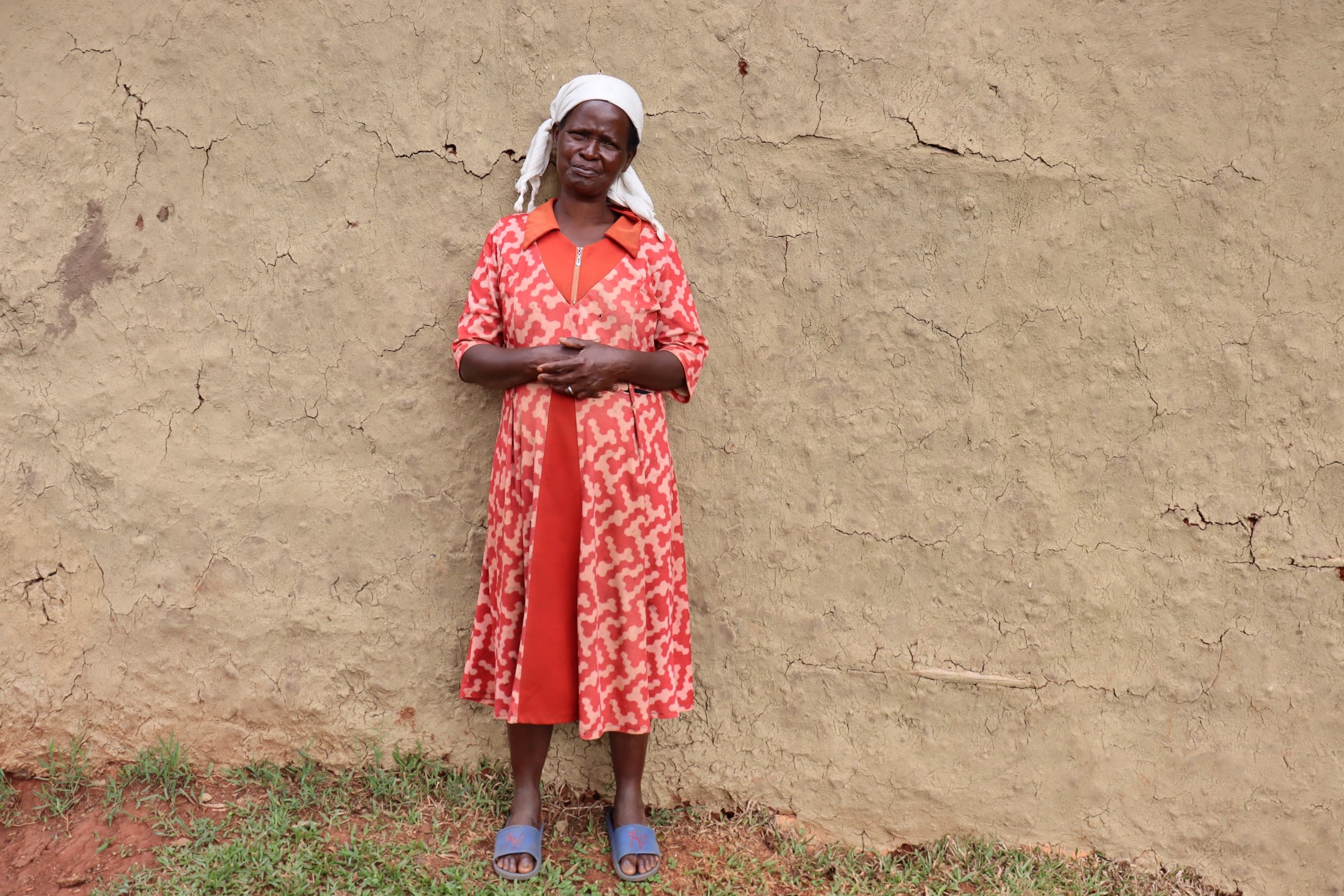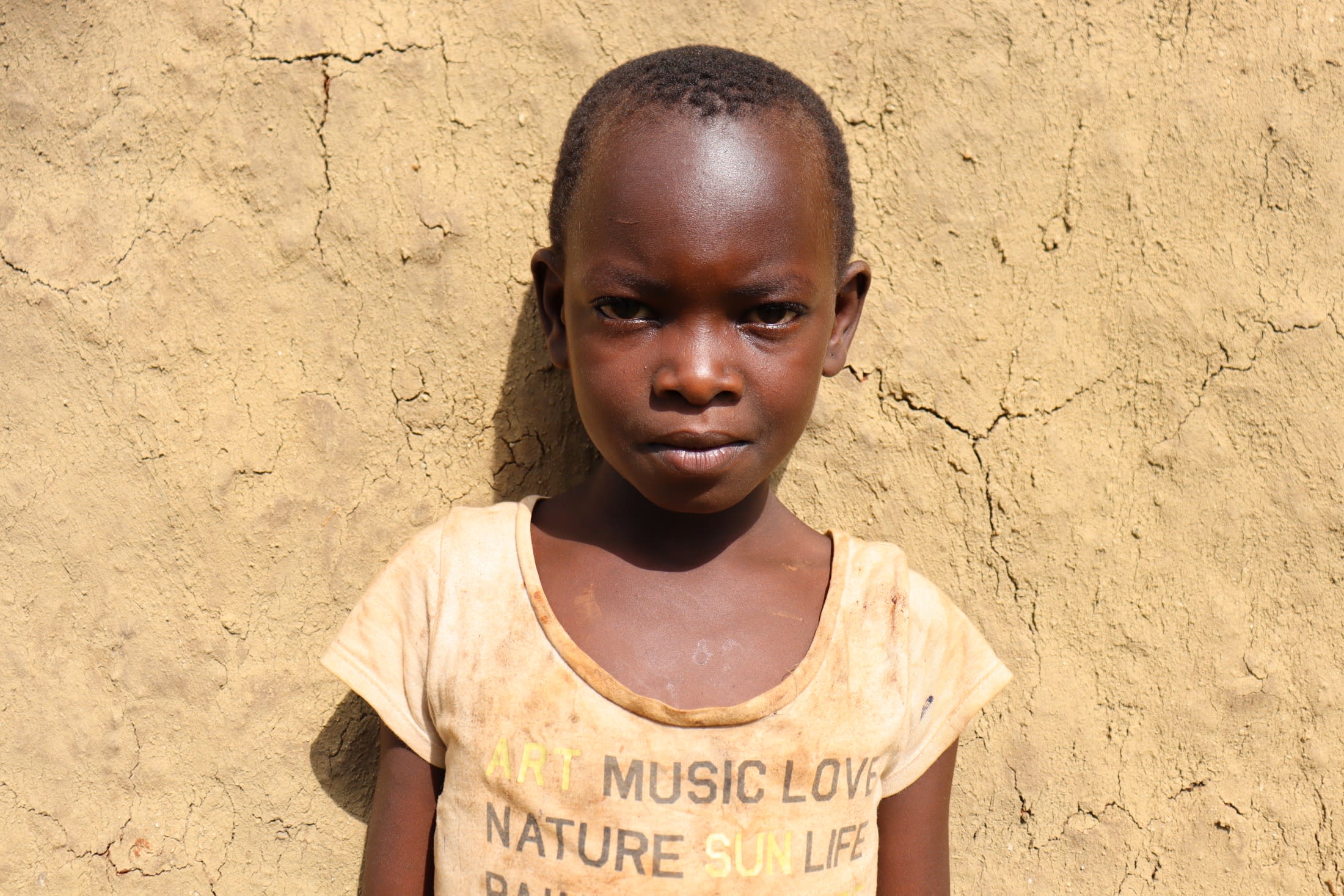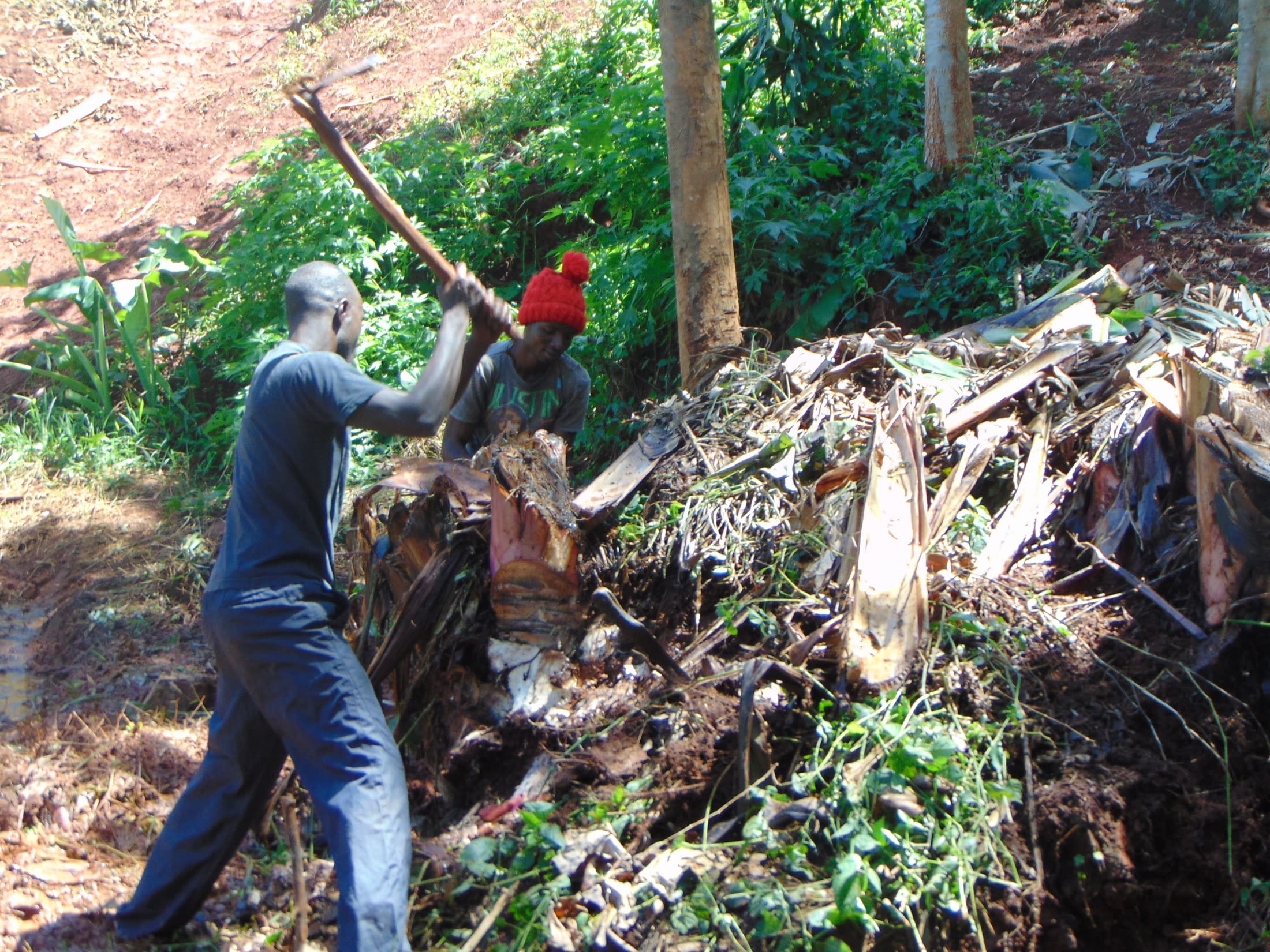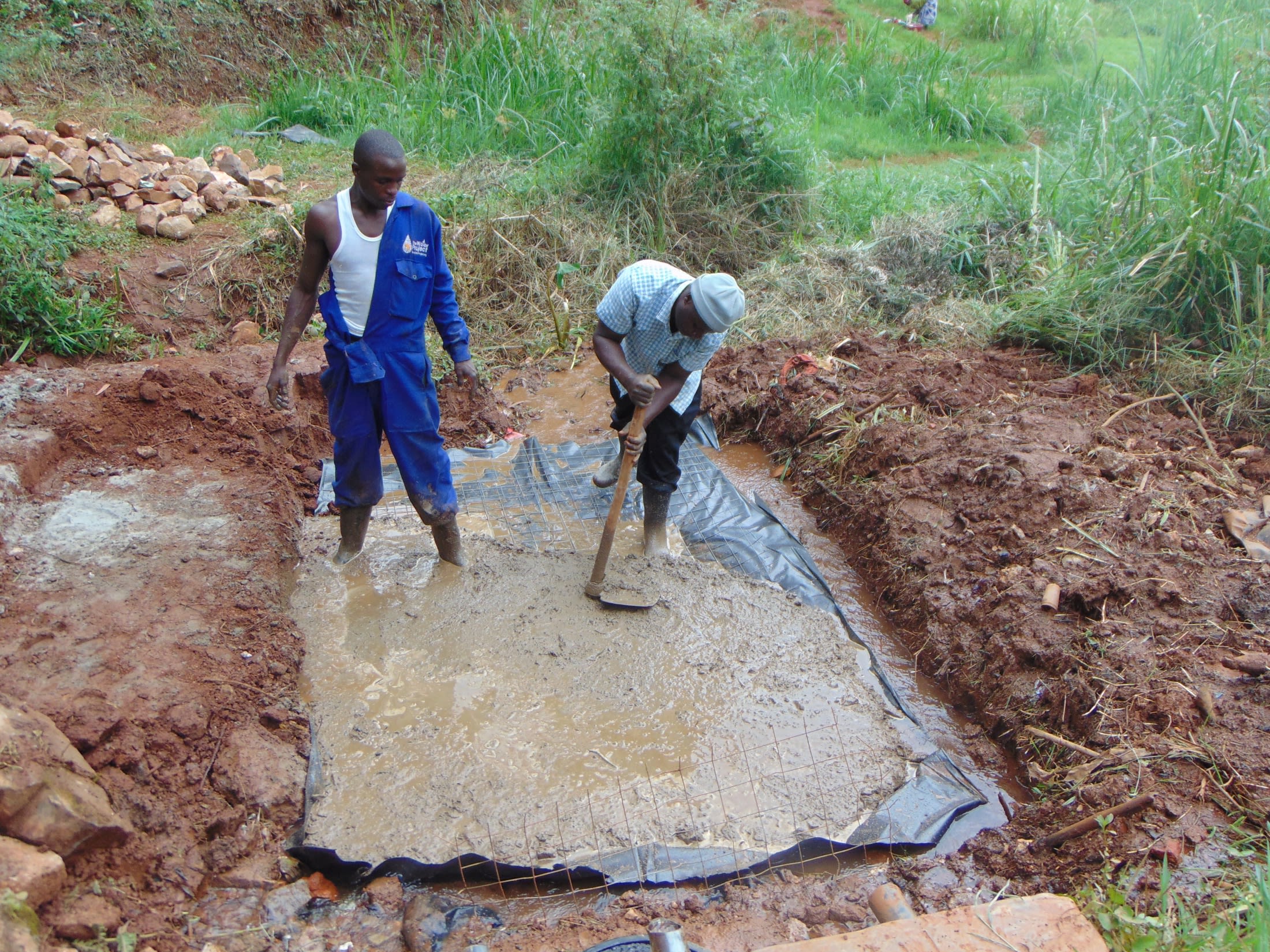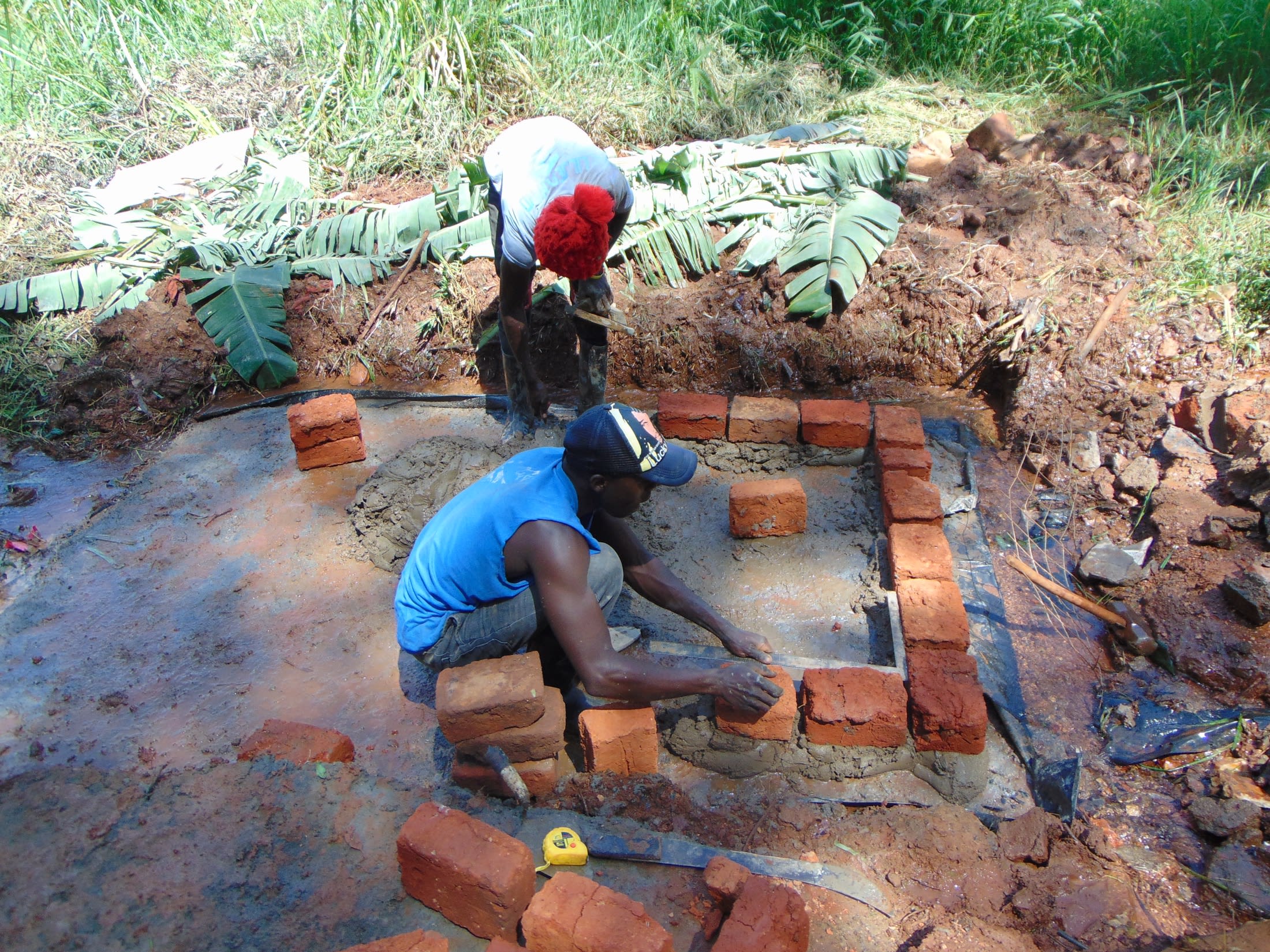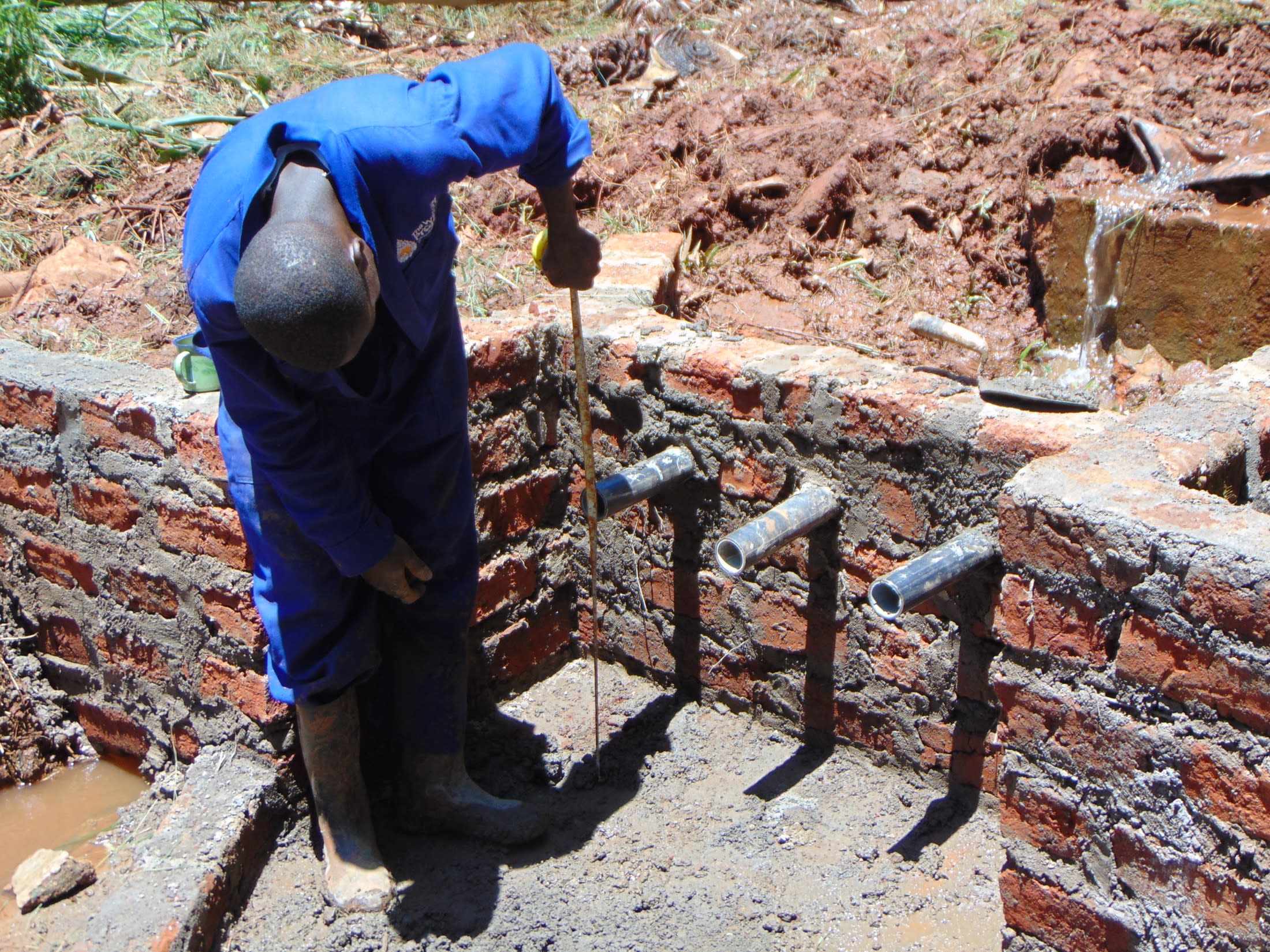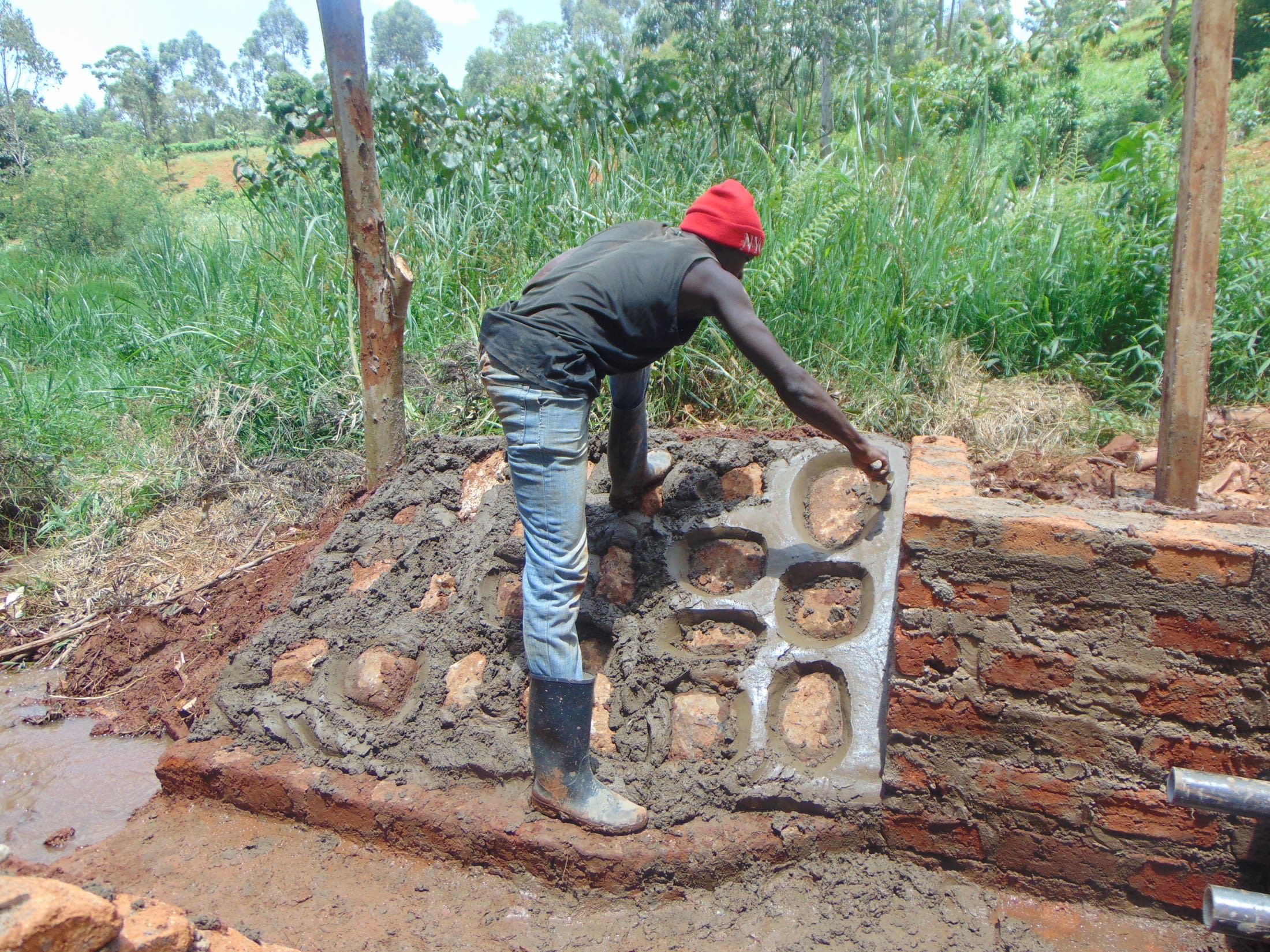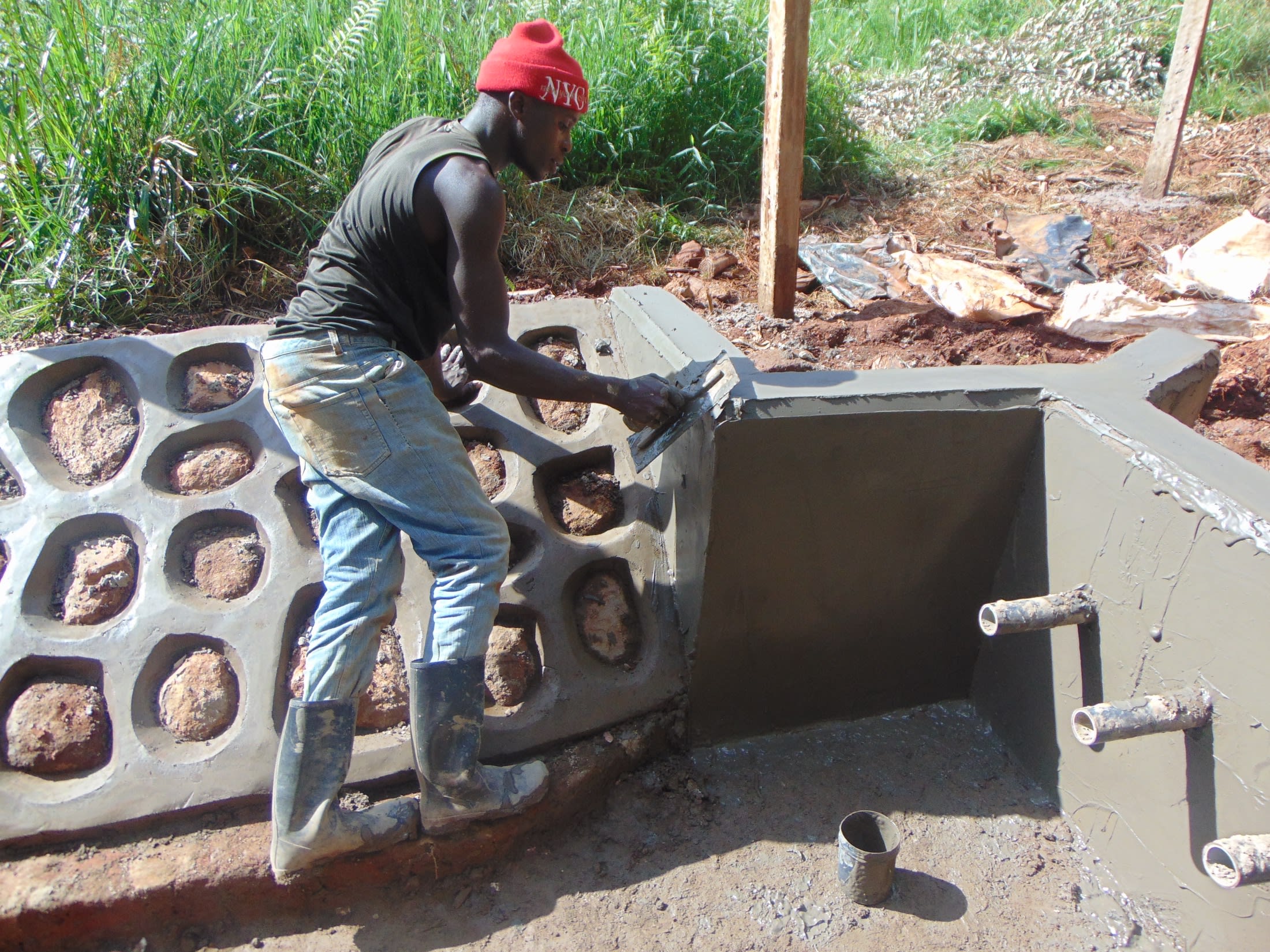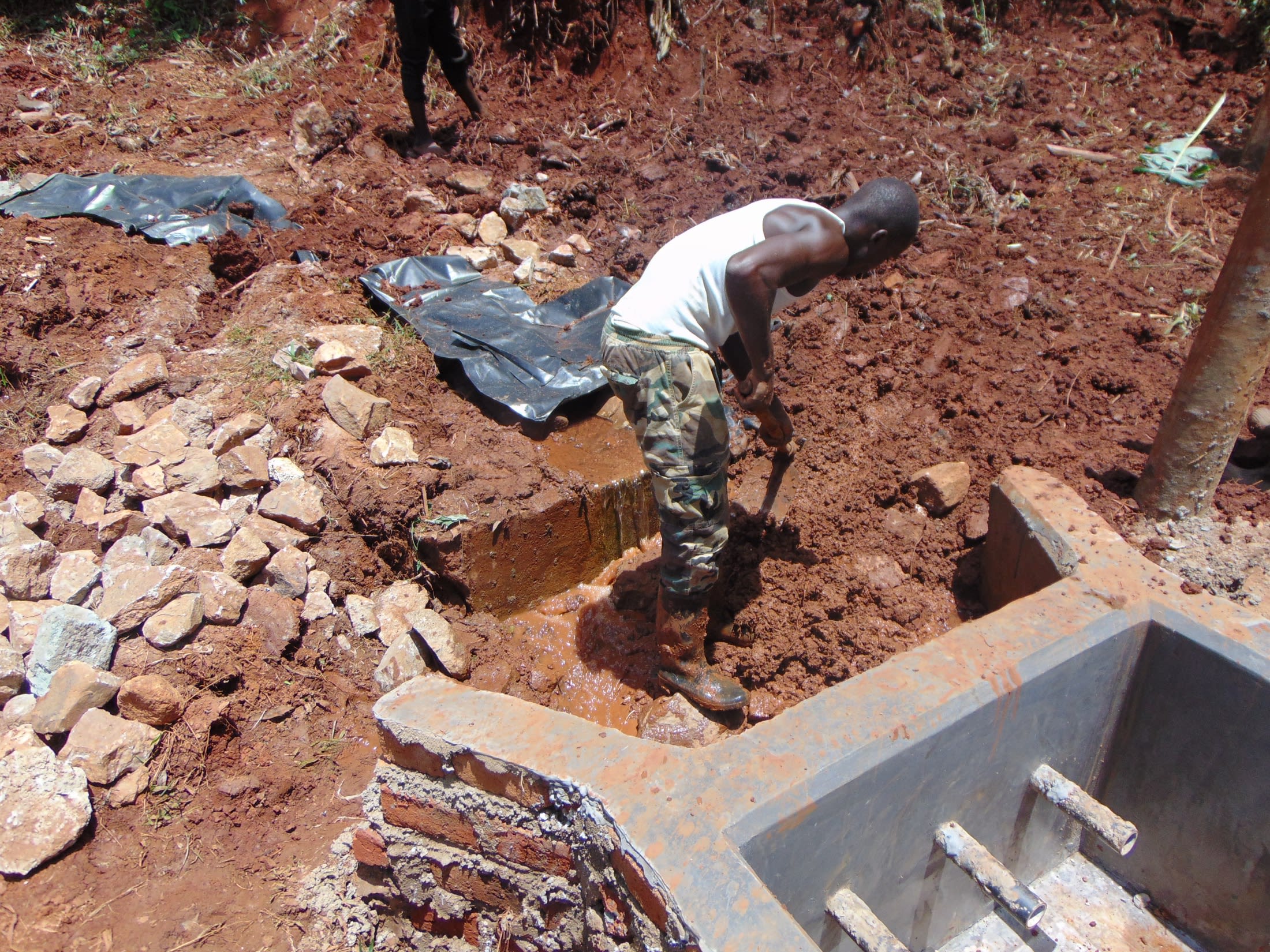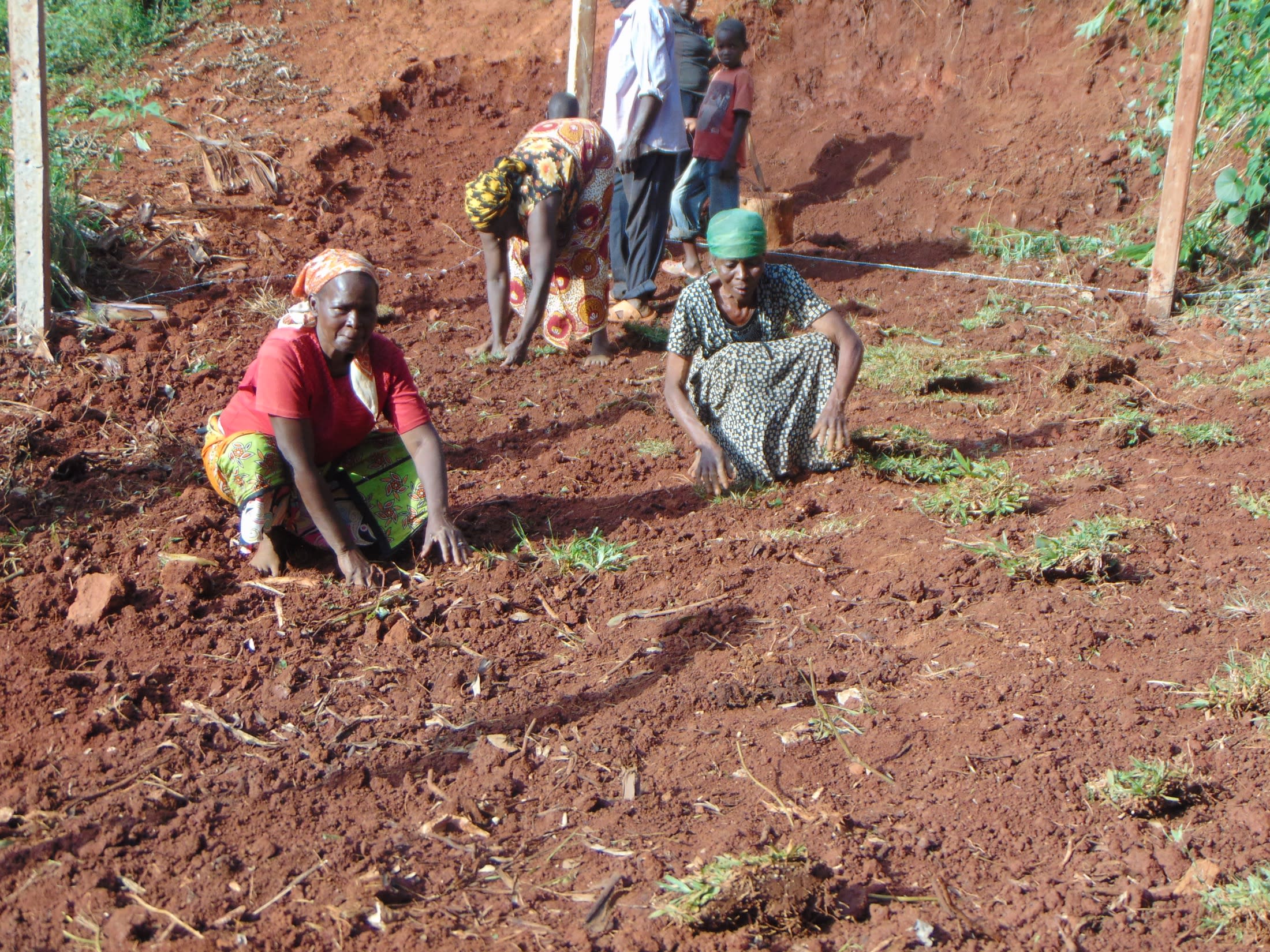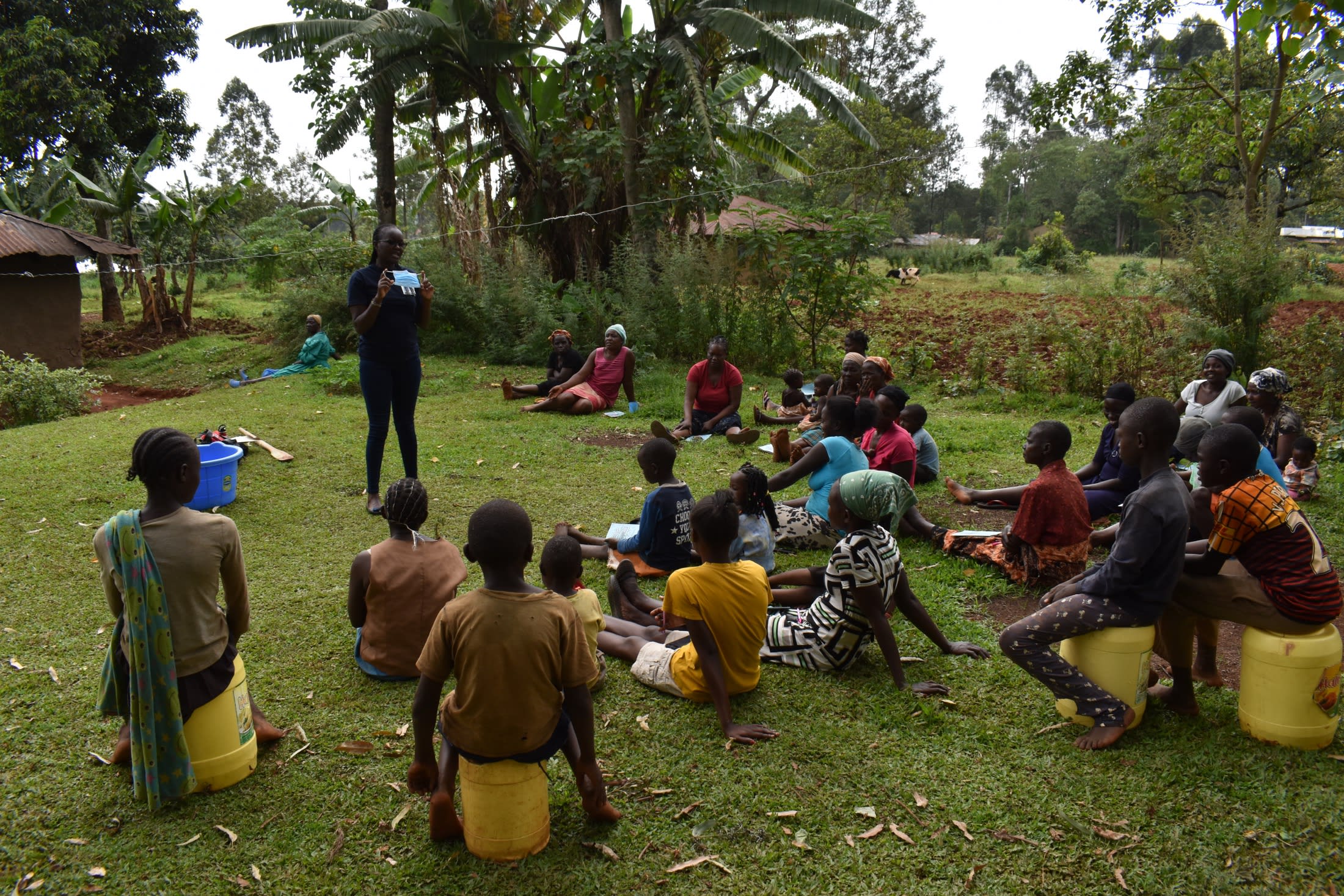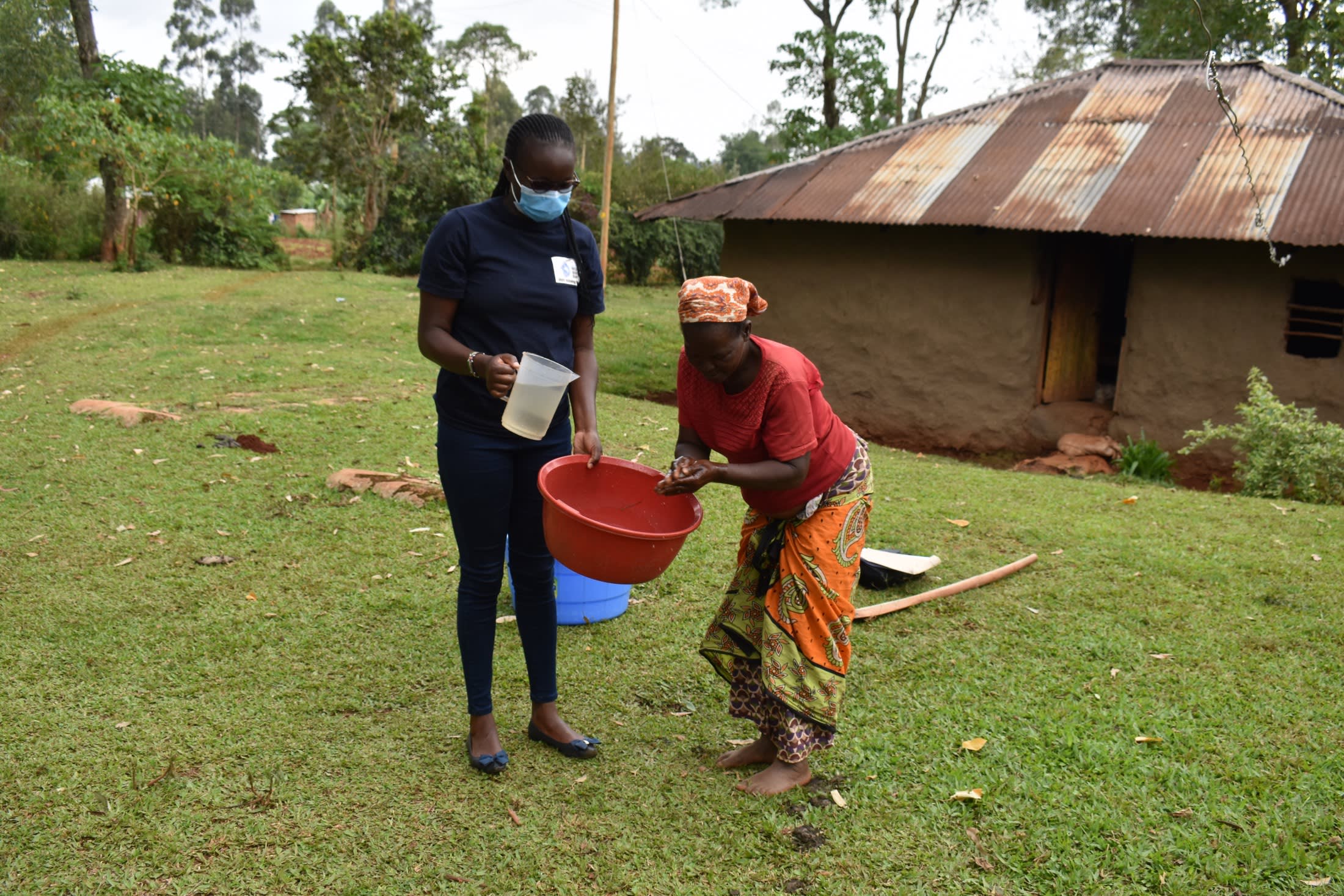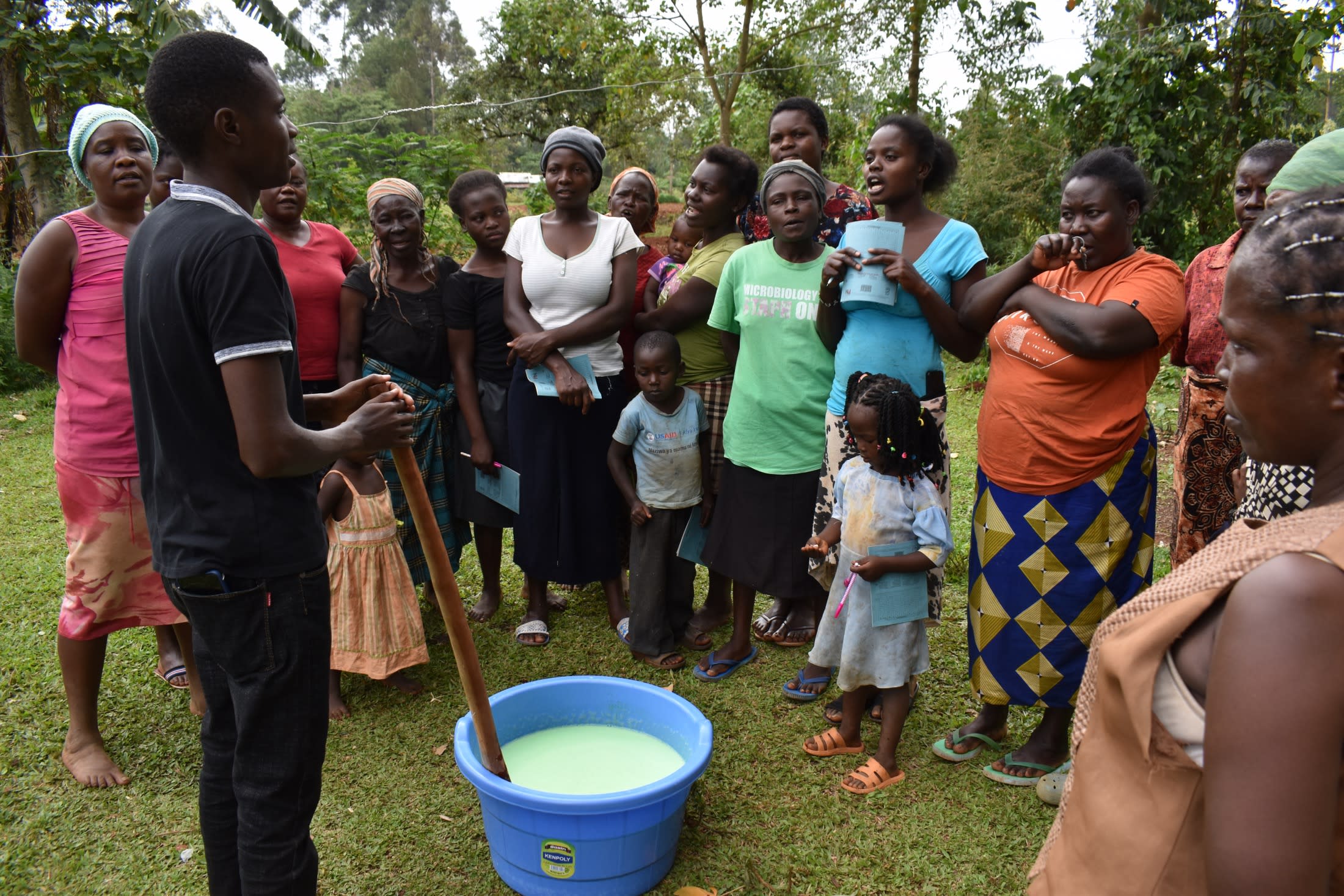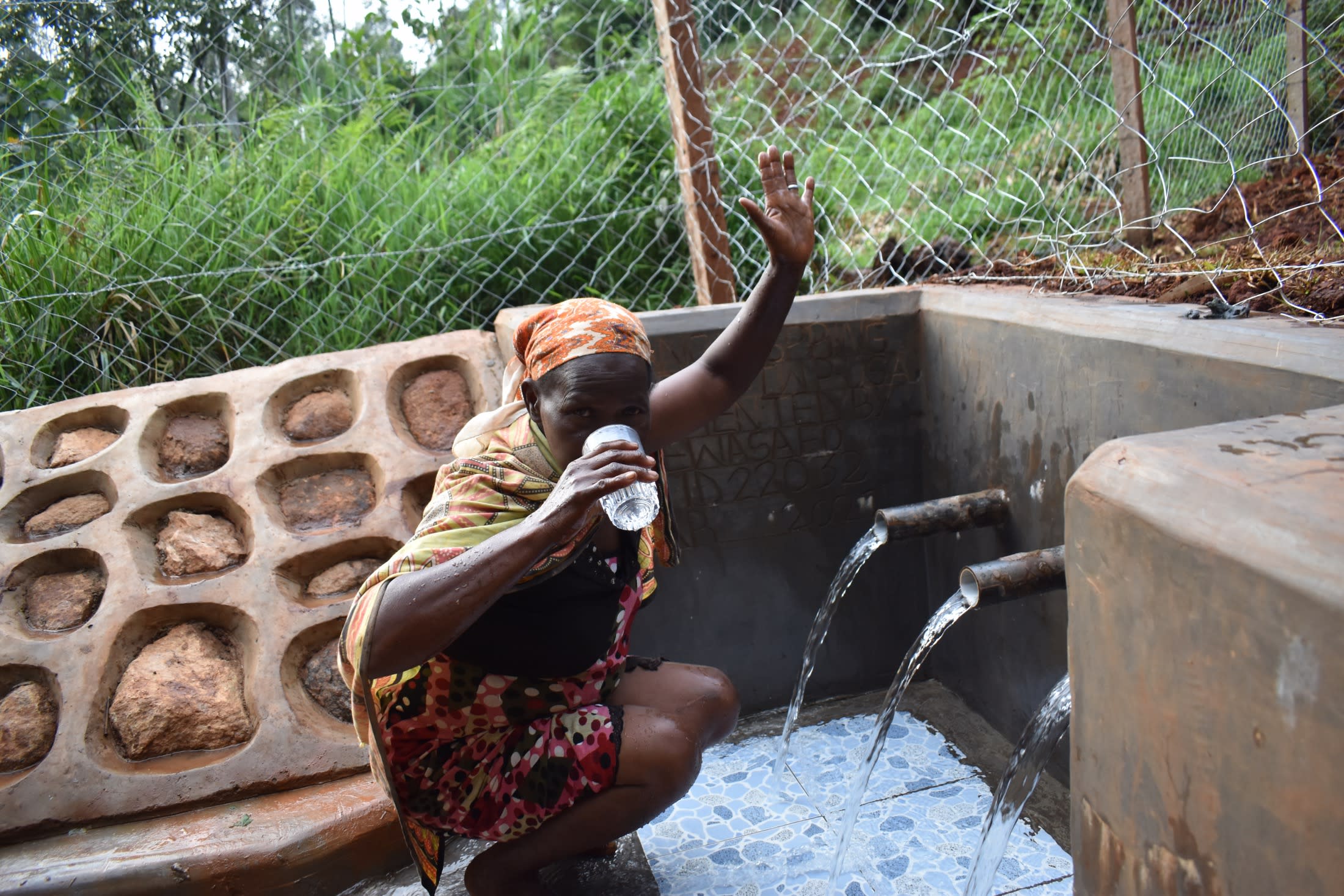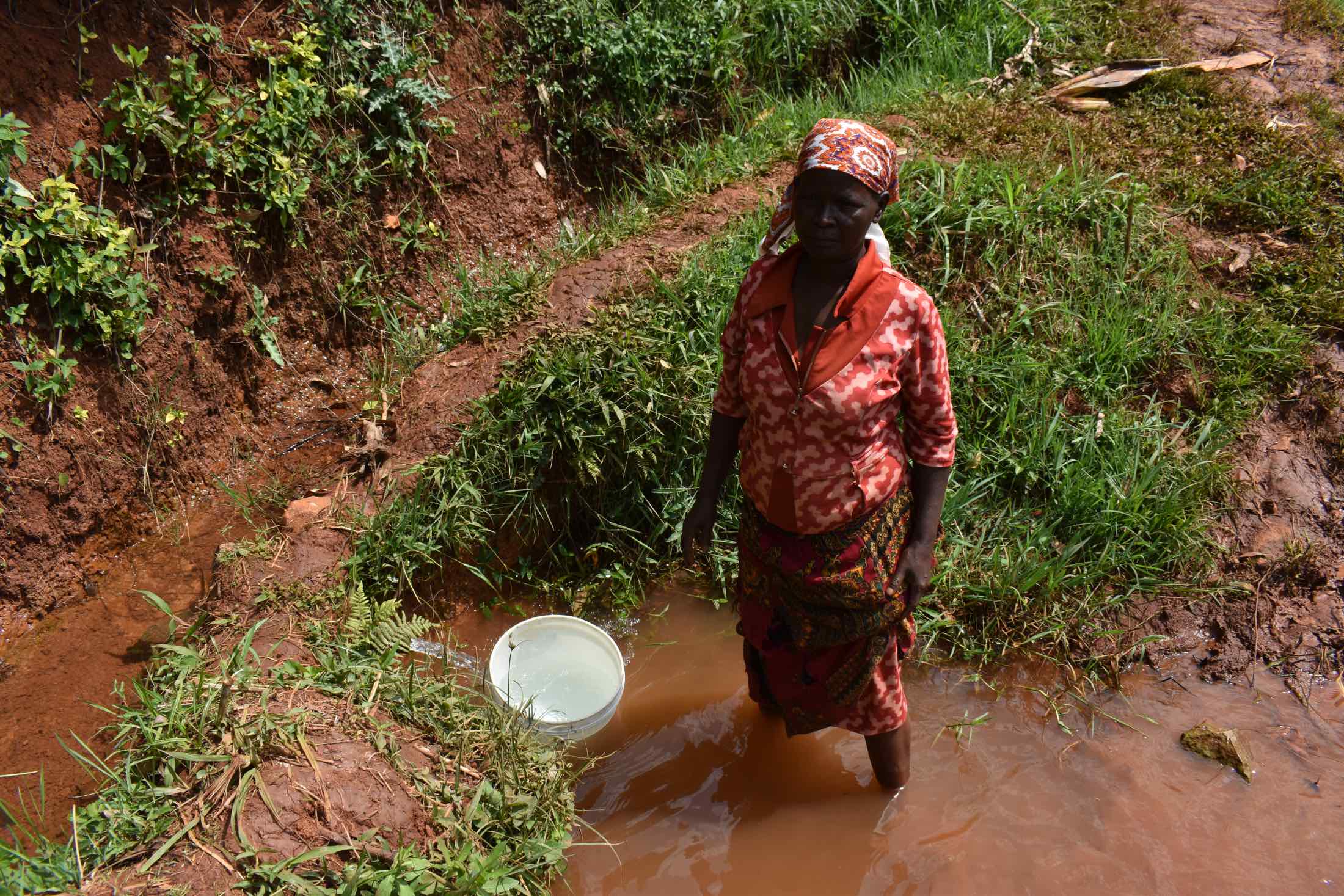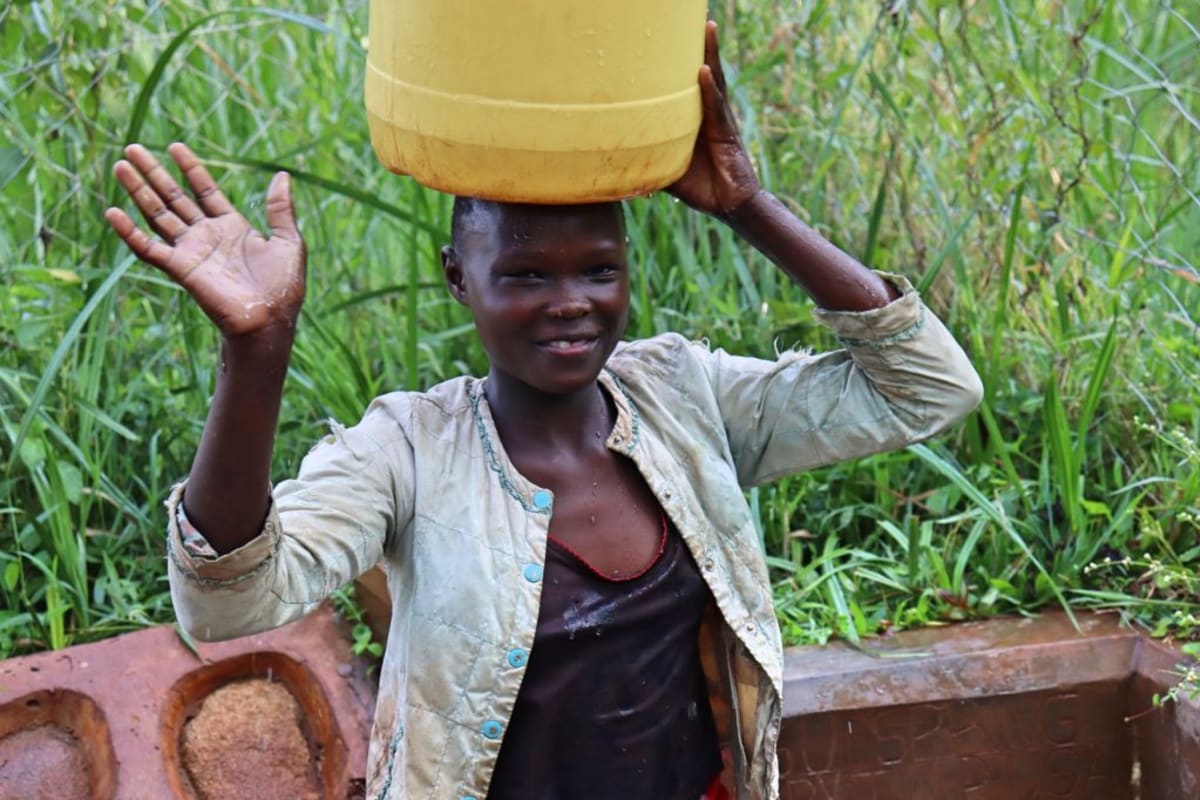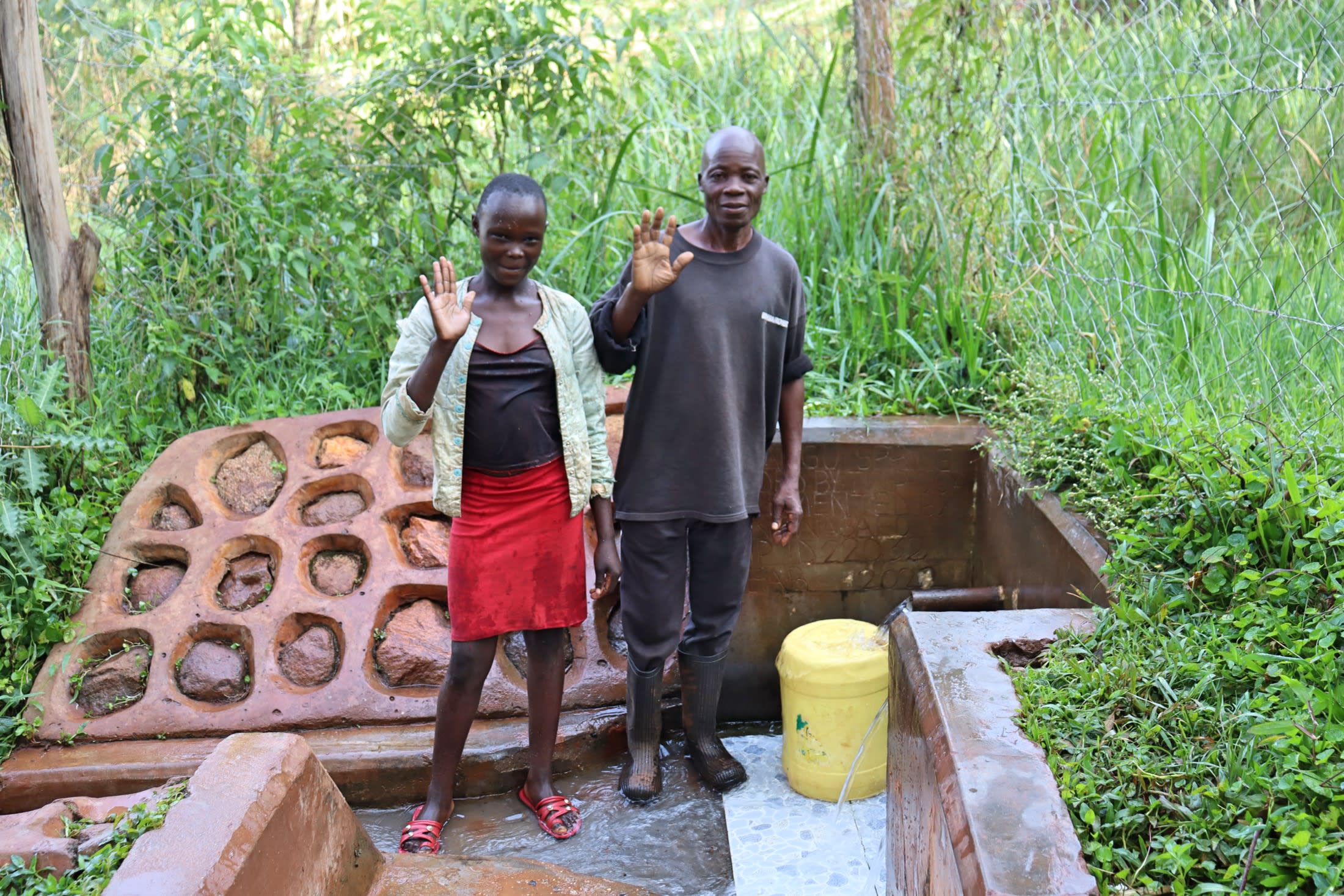Shivakala community in Western Kenya is home to Mukangu Spring, which serves 280 people daily. The spring area is green with vegetation, including bananas and a landscape that gradually slants toward the water point.
As you move downstream, some places become very steep and hard to navigate on foot. Downstream, one can also spot a fish pond that benefits from the runoff water from the spring.

The majority of community members are small-scale farmers who plant vegetables for sale. Some chose to be water entrepreneurs (collect, carry and sell water) because of the high water demand, especially in nearby rental units.
The area is periurban, on the outskirts of Kakamega town. Thus, the population is very high because of its cosmopolitan nature. The town immigrants are slowly overpopulating the original community members, and the land prices are steadily spiking as people look for places to farm or build rental houses.
The main water source is difficult to access because the entrance is steep, and you must wade into the water to use the improvised discharge pipe. The situation gets more dangerous during wet seasons, with common reports of people skidding and falling with water containers.
"It's very hard to fetch water from here because of the lack of a friendly access point. There is no staircase to use, and we do slide while carrying water home," said farmer Florence Ominde.

"We fear getting hurt by objects inside the pool of water that we pass through before we fetch water. Most of us come to the spring barefoot, and thus we are most vulnerable," said Jared O., 13.
The water is not safe for drinking since it's open to all sorts of contamination, ranging from stormwater runoff to human/animal interference. People complain of stomachaches, especially when nearby water points go dry and this water point becomes more crowded. Pollution is inevitable.
Overcrowding is also a problem as there is great demand for water from community members and the nearby school that accesses this water point. People wake up early to collect water for their drinking and domestic needs and often have to make up to 5 trips to ensure they have enough water for the day.
What We Can Do:
Spring Protection
Protecting the spring will help provide access to cleaner and safer water and reduce the time people have to spend to fetch it. Construction will keep surface runoff and other contaminants out of the water. With the community’s high involvement in the process, there should be a good sense of responsibility and ownership for the new clean water source.
Fetching water is a task predominantly carried out by women and young girls. Protecting the spring and offering training and support will, therefore, help empower the female members of the community by freeing up more of their time and energy to engage and invest in income-generating activities and their education.
Training on Health, Hygiene, COVID-19, and More
To hold trainings during the pandemic, we work closely with both community leaders and the local government to approve small groups to attend training. We ask community leaders to invite a select yet representative group of people to attend training who will then act as ambassadors to the rest of the community to share what they learn. We also communicate our expectations of physical distancing and wearing masks for all who choose to attend.
The training will focus on improved hygiene, health, and sanitation habits in this community. We will also have a dedicated session on COVID-19 symptoms, transmission routes, and prevention best practices.
With the community’s input, we will identify key leverage points where they can alter their practices at the personal, household, and community levels to affect change. This training will help to ensure participants have the knowledge they need about healthy practices and their importance to make the most of their water point as soon as water is flowing.
Our team of facilitators will use a variety of methods to train community members. Some of these methods include participatory hygiene and sanitation transformation, asset-based community development, group discussions, handouts, and demonstrations at the spring.
One of the most important issues we plan to cover is the handling, storage, and treatment of water. Having a clean water source will be extremely helpful, but it is useless if water gets contaminated by the time it is consumed. We and the community strongly believe that all of these components will work together to improve living standards here, which will help to unlock the potential for these community members to live better, healthier lives.
We will then conduct a small series of follow-up trainings before transitioning to our regularly scheduled support visits throughout the year.
Training will result in the formation of a water user committee, elected by their peers, that will oversee the operations and maintenance of the spring. The committee will enforce proper behavior around the spring and delegate tasks that will help preserve the site, such as building a fence and digging proper drainage channels. The fence will keep out destructive animals and unwanted waste, and the drainage will keep the area’s mosquito population at a minimum.

 Protected Spring
Protected Spring
 Rehabilitation Project
Rehabilitation Project












